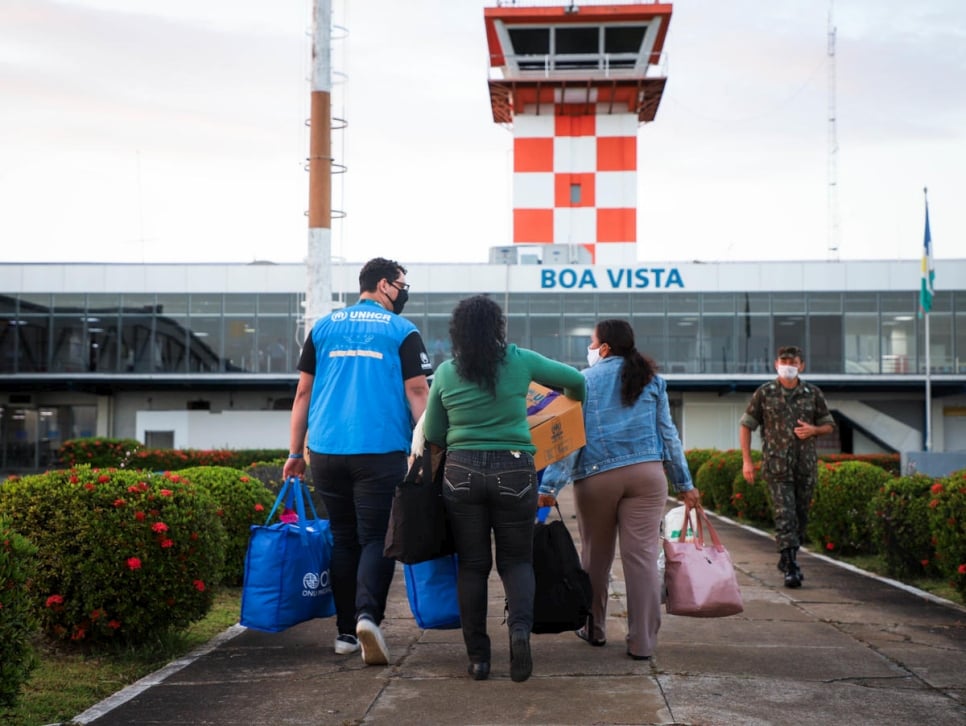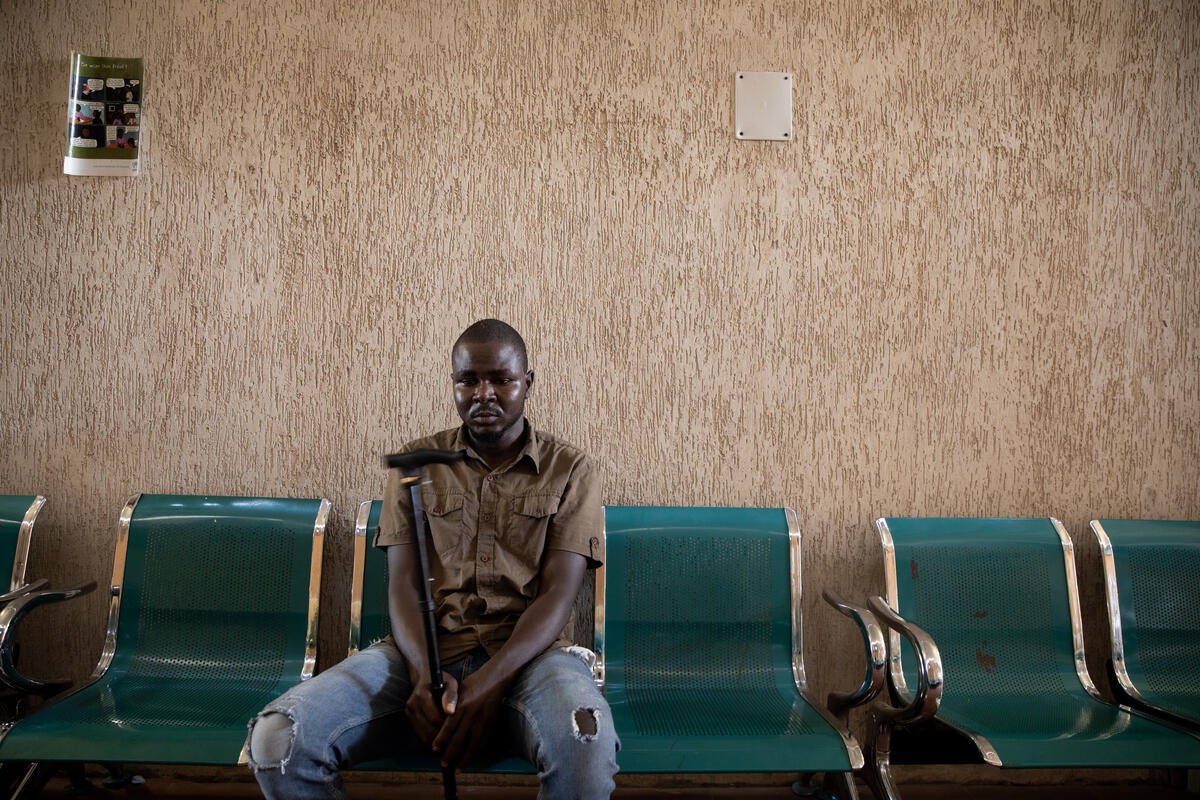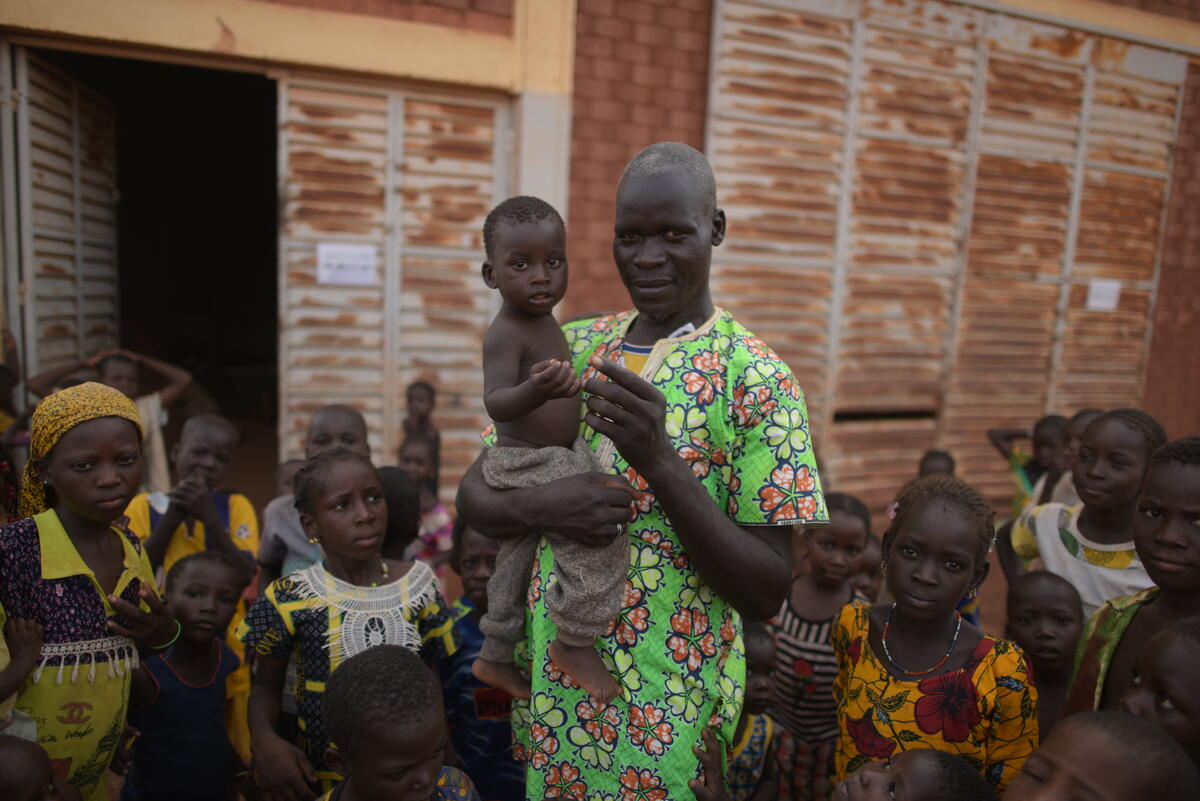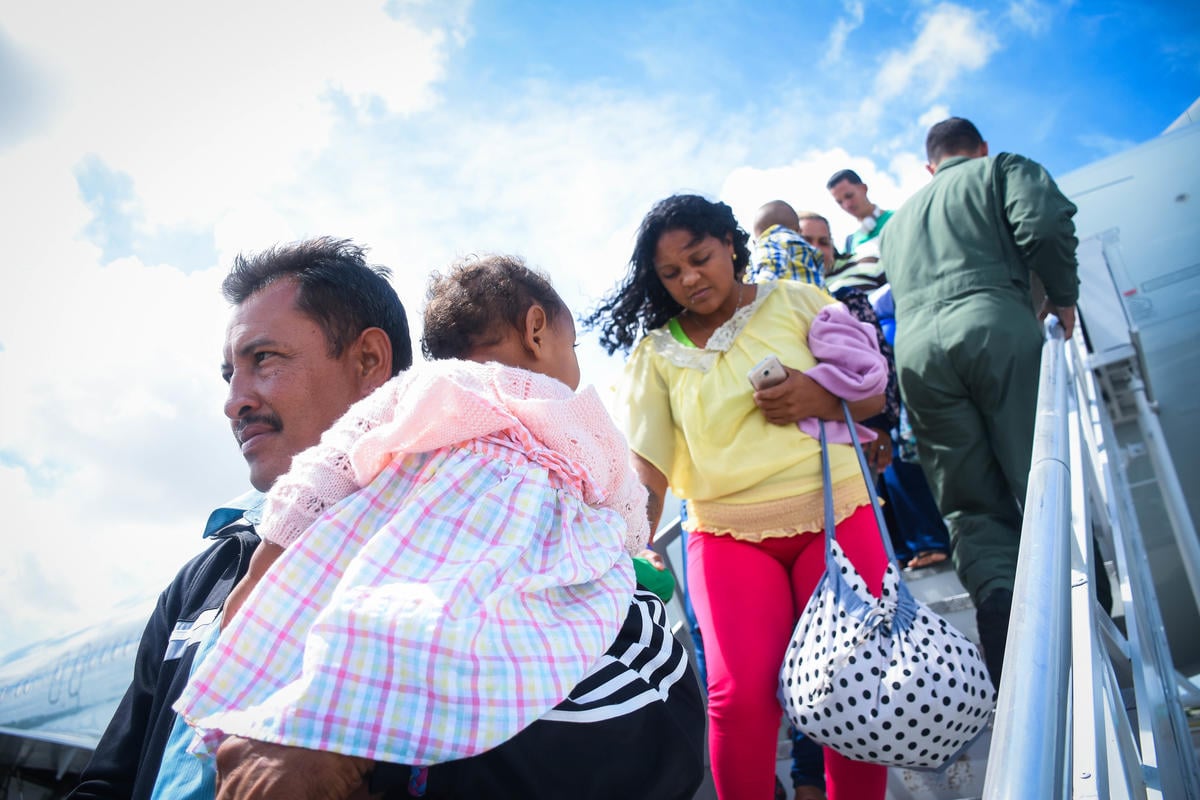Tension mounts in two Congolese camps after woman shot dead
Tension mounts in two Congolese camps after woman shot dead

GOMA, Democratic Republic of the Congo, November 21 (UNHCR) - Fears mounted for the safety of tens of thousands of displaced civilians at two camps in eastern Democratic Republic of the Congo (DRC) after a young woman was shot dead on Friday morning.
The alarming security incident at the sprawling Kibati I camp in North Kivu province gave added urgency to plans to move up to 30,000 of the 67,000 internally displaced Congolese in Kibati's two camps to a new site, Mugunga III, under construction in a safer area some 15 kilometres away.
A UNHCR spokesman said several homes were also looted after families fled the shooting in Kibati, which is located several kilometres north of the provincial capital, Goma, but only two kilometres from the frontline between government soldiers and rebel troops. "Our team in Kibati is assessing the situation and the needs of the victims," the spokesman said.
The 20-year-old woman was reportedly killed during an abduction attempt by uniformed and armed men. The shooting came amid a relative lull in the fighting, which flared in August and has uprooted some 250,000 people, many of them already internally displaced people (IDPs)
"We are afraid that such incidents may continue to happen because we have armed men going in and out of the camps," said Ibrahima Coly, head of UNHCR's sub-office in Goma.
The UN refugee agency has repeatedly expressed concern about the safety of the IDPs in Kibati, fearing mainly that they could be caught in the crossfire if widescale fighting breaks out again. Work on the 65-hectare Mugunga III began last weekend and the killing in Kibati could add impetus to the work.
UNHCR and partners have cleared the ground and started building accommodation blocks and other infrastructure, including reception facilities, access roads, latrines and a water distribution system. The work is taking time because the site lies on a hardened lava field.
Once the basics are in place, UNHCR will help the provincial authorities move people on a voluntary basis to Mugunga III. Most will make the 15-kilometre journey by foot, but young children, the elderly and the infirm will be transported by truck. UNHCR is building way stations between Kibati and Mugunga where people can rest and receive food and water.
Meanwhile, the pace of voluntary repatriation of Congolese refugees from Zambia has slowed because of the fighting in North Kivu - even though few of the refugees come from the province. There are currently some 45,000 Congolese refugees in Zambia, 28,000 of whom live in camps and settlements in the north of the country.
"Just before the fighting erupted in the Kivu region, the number of refugees registering for voluntary repatriation in the Mwange and Kala camps in northern Zambia had shown a significant increase. But now, very few are coming forward to register and even some of those who register are opting out at the last minute," said James Lynch, UNHCR's representative in Zambia.
Most of the refugees in the camps are from the peaceful Katanga province, but many of them listen to shortwave radio to find out about the security situation in North Kivu. They pass on the latest information to other camp residents. UNHCR will continue to inform the refugees about conditions in their homeland so that they can decide on whether or not to return.
Some 9,000 Congolese refugees have returned to DRC from Zambia with UNHCR assistance this year, compared to slightly more than 7,300 in 2007. Most have gone back to Katanga, bordering Zambia, but some refugees now say they fear the fighting could spread throughout eastern and southern DRC.
Fighting in North Kivu intensified at the end of 2006. By January 2008, it had brought the total number of IDPs in the region to more than 800,000. Some 12,000 Congolese have crossed the border into Uganda since August.
By David Nthengwe in Goma, DRC
and Kelvin Shimo in Lusaka, Angola








